The overall design of the shoulder is a ball and socket joint, however the socket portion is quite small when we compare it to the ball portion. To attempt to make the joint more stable while still allowing for large range of motion, there is a shoulder labrum that is made of cartilage. There are many muscles that cross the shoulder joint including the four muscles of the rotator cuff, pectorals, deltoid and scapular muscles on the back. All of these contribute to the ability of a gymnast to perform their sport such as rotations hanging on the high bar or to support their body weight to perform circles on the pommel horse.
Therefore, it is very important for male gymnasts to have both shoulder strength and shoulder stability to decrease their injury risk. Here are some examples of shoulder strengthening for the male gymnast:
Foam Roll on Wall Shoulder Strengthening
Stand facing the wall with your forearm on a foam roller. Pushing into the foam roller, roll up/down on the wall keeping the shoulder blade muscles engaged. This can be progressed by first using two arms, decreasing to one arm, adding a dumbbell, or by standing on one foot.
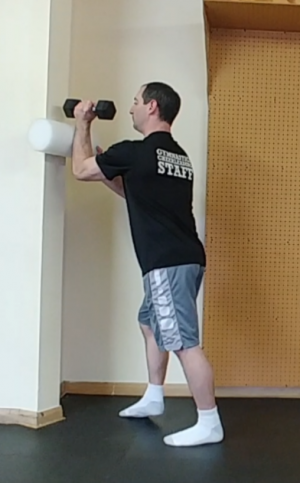
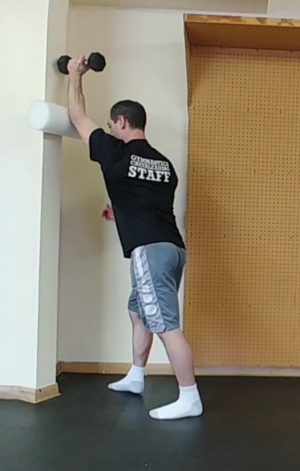
Tear Aparts with Resistance Tubing
Use a very long piece of tubing and stand with it under the foot of the shoulder you want to focus on (right shoulder, stand with tubing under right foot). Then hold the tubing in both hands and work on pulling the tubing apart at chest level. You can progress this exercise to pulling apart at more overhead positions.
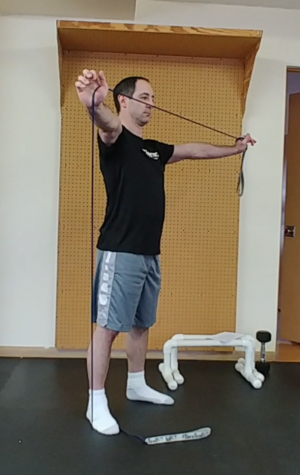
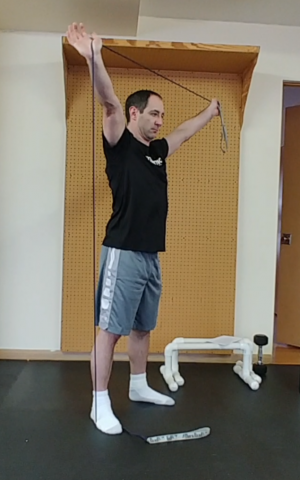
Field Goal Arm Slides on Wall
Standing with your back against the wall, keep your low back flat on the wall. Have your neck and head also touching the wall. Place both arms against the wall making sure the back of your hands, elbows and shoulders are fully against the wall. Then slide the arms up, straightening elbows and down into that field goal position while keeping flat against the wall.
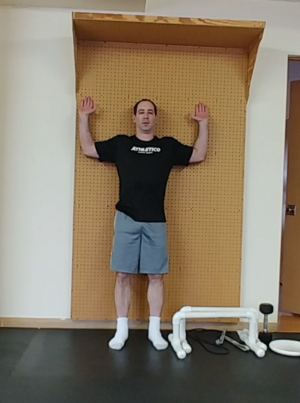
Arm Swings in Push Up Position
This works more on the stability of the arm on the ground rather than the moving shoulder. Begin in a push up position, raise one arm and reach forward then backward, allowing your body to move with your arm. You can also vary this by swinging the arm out to your side, as if doing a jumping jack with the one arm. With all of these arm swings, make sure the shoulder of the other arm remains stable, the back stays flat and the core muscles are engaged. Begin with five repetitions.
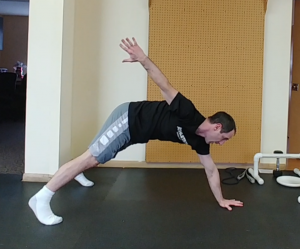
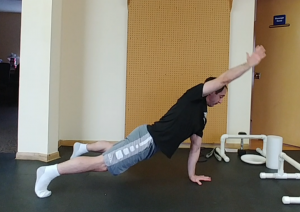
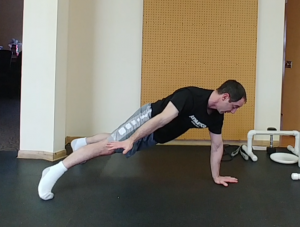
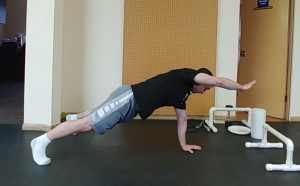
Parallette Push Ups
Using a parallette, begin with legs forward and work on lifting into your extension for a timed hold of anywhere from 10-30 seconds (keep your feet on the floor). You can progress to lateral weight shifts as able for added shoulder stability.
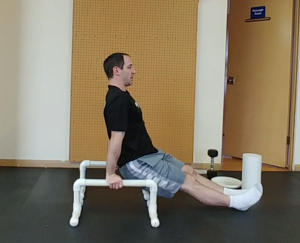
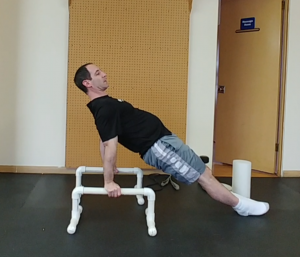
Hand Walks with Frisbee
Begin in push up position with feet on a Frisbee. Walk forward in plank position only using hands and allow feet on Frisbee to slide forward with you. You can also perform this exercise sideways or backward. Remember to keep your shoulder muscles and back muscles engaged.
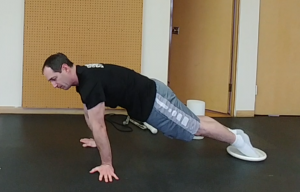
Handstand Push Up
In handstand position against a wall, push through the shoulder blades, similar to a shoulder shrug, to push up a little further. Hold for three seconds then return to start position.
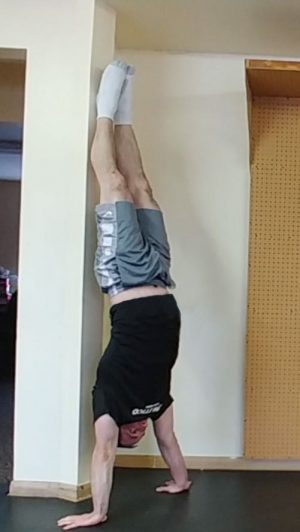
Hopefully these exercises can add some variety to your strength and conditioning program for improved shoulder strength and stability for male gymnasts. If you experience any unusual aches or pains during training, schedule a free assessment at your nearest Athletico clinic.
The Athletico blog is an educational resource written by Athletico employees. Athletico bloggers are licensed professionals who abide by the code of ethics outlined by their respective professional associations. The content published in blog posts represents the opinion of the individual author based on their expertise and experience. The content provided in this blog is for informational purposes only, does not constitute medical advice and should not be relied on for making personal health decisions.
References:
1. Webb BG, Rettig LA (2008) Gymnastic wrist injuries. Curr Sports Med Rep 7:289–295
2. Westermann RW, Giblin M, Vaske A, Grosso K, Wolf BR. Evaluation of Men’s and Women’s Gymnastics Injuries: A 10-Year Observational Study. Sports Health. 2015;7(2):161-5.
About the Author:
Tara Hackney, a physical therapist in Marion, IA, enjoys working with all patient types, especially gymnasts, cheerleaders, and dancers. She is the prominent blogger for Athletico's Gymnastic/Cheer Program. With an orthopedic specialization and training in dry needling and Graston technique, Tara hopes to answer your questions about injuries and injury prevention in an easy-to-understand manner. She hopes to ease fears surrounding pain and injuries, address concerns about recovery, and provide tips to prevent injury. In her free time, she enjoys spending time with her dog, reading, and watching her nephews play sports.

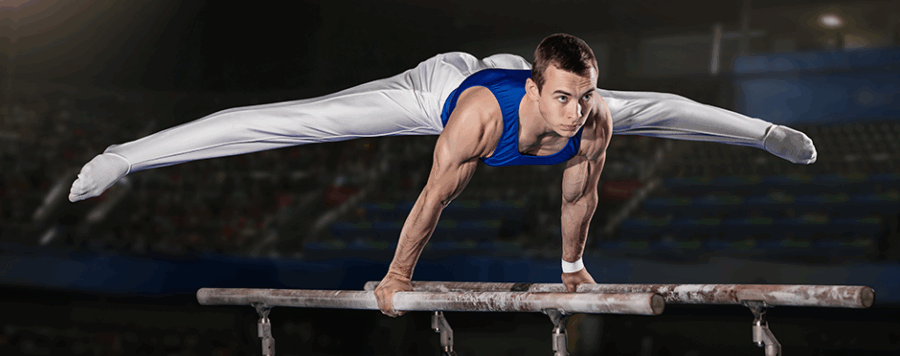 width="900"
height="356"
>
width="900"
height="356"
>
